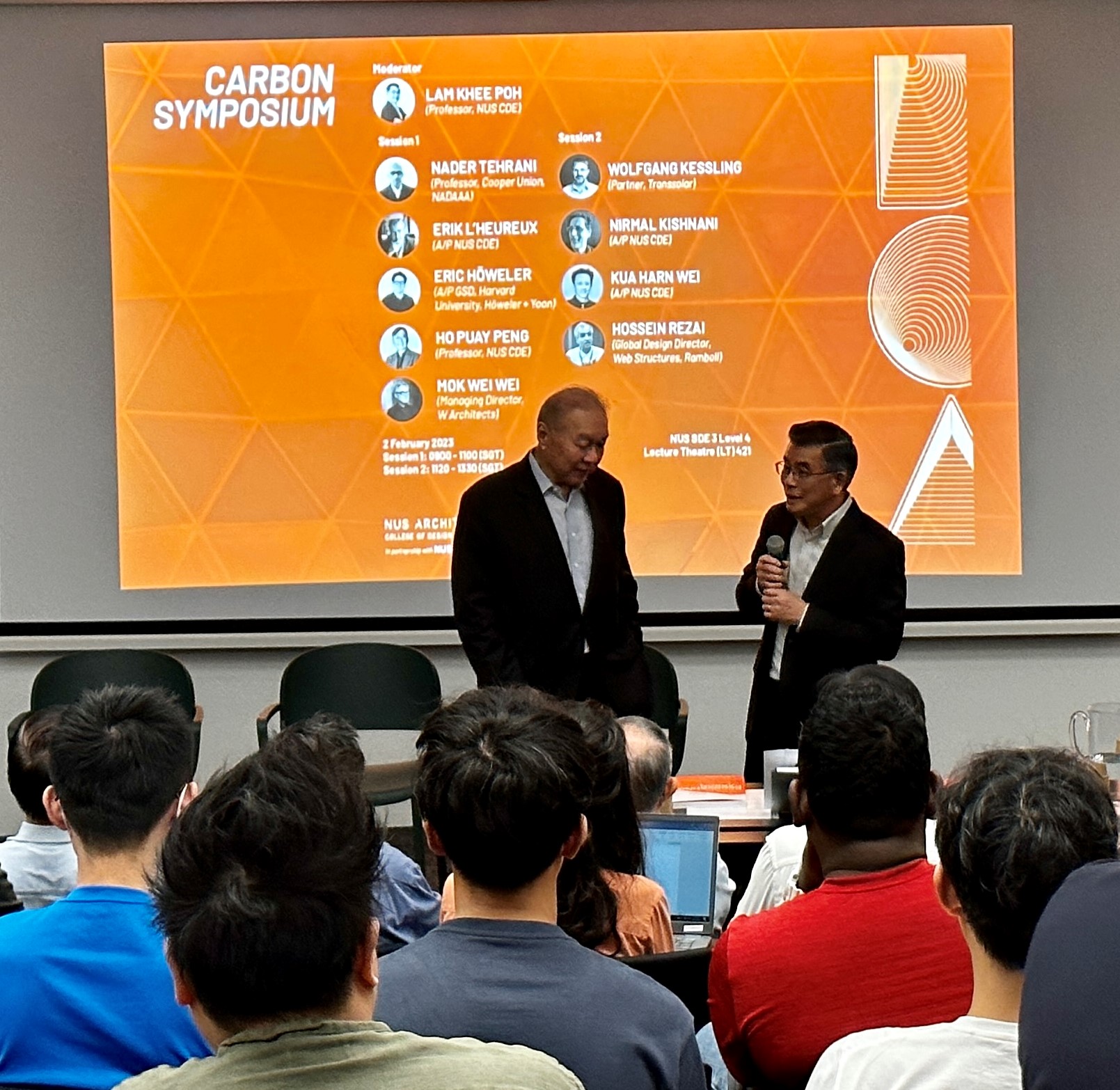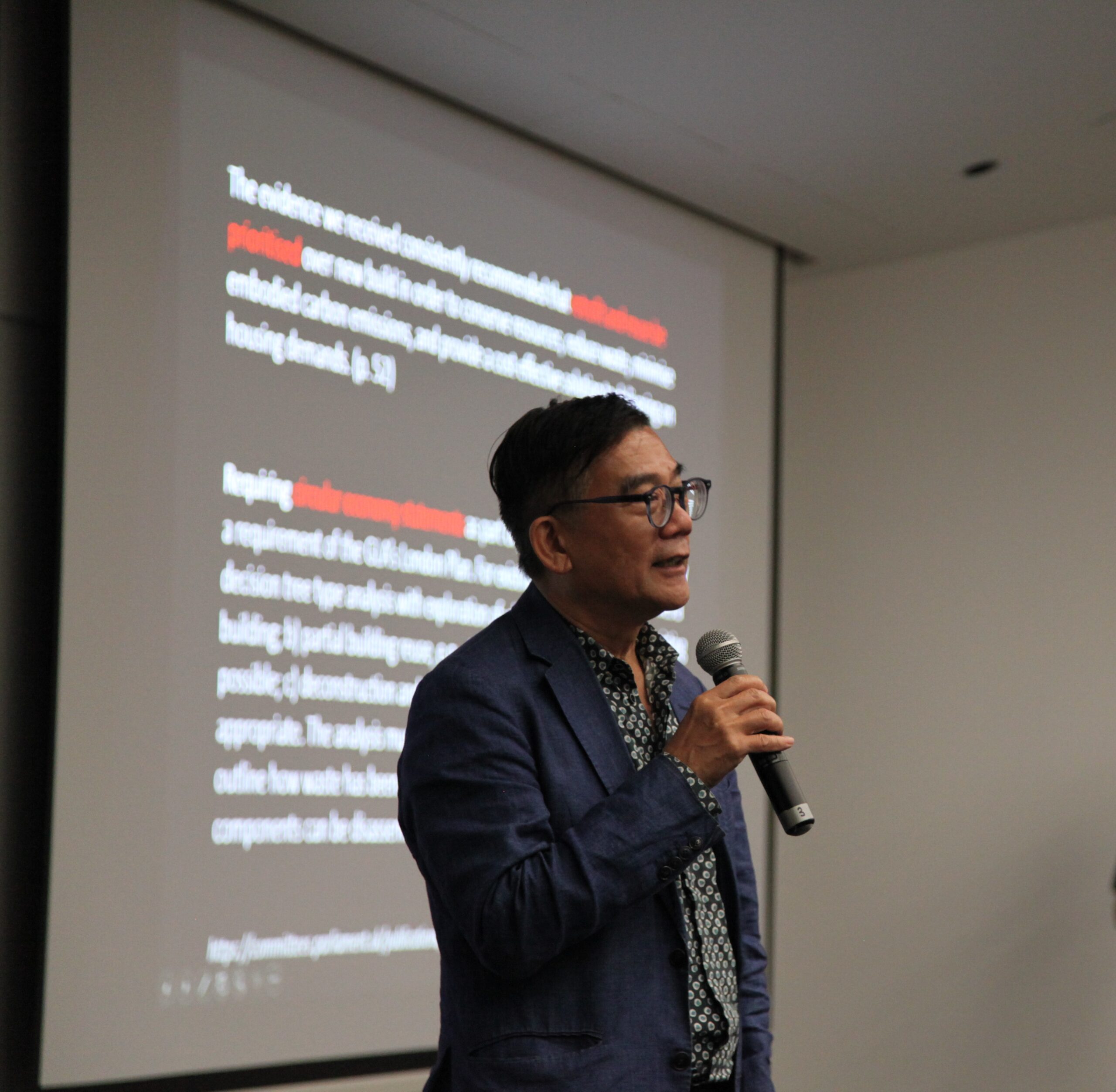Greening our buildings: Carbon Symposium for the Built Environment


Carbon is an intrinsic part of life, but it is also infamous for intensifying the climate crisis around us. With the built environment contributing over a fifth of Singapore’s carbon emissions, it is crucial to look at how carbon in buildings here can be reduced.
With this in mind, the first-ever Carbon Symposium for the Built Environment was organised by the College of Design and Engineering (CDE) at the National University of Singapore (NUS) in partnership with NUS Sustainability to provide a platform to explore the research, design and solutions for reducing carbon in buildings. The half-day symposium on 2 February 2023 was moderated by Professor Lam Khee Poh from CDE and featured a total of nine experts.
In the spotlight were the recently retrofitted super-low carbon and net-zero energy buildings at CDE – SDE 1 and 3, which were officially launched after the symposium. An interdisciplinary effort by architects, designers and engineers, these adaptive reuse projects offer important lessons on how other older buildings in Singapore may be rejuvenated – instead of being torn down and rebuilt – to meet new needs while improving their carbon performance. Retrofitting the SDE buildings is estimated to cost only 40 per cent of rebuilding them, and the buildings currently consume about a third of the energy that they did before renovation.
At the symposium, Associate Professor Erik L'Heureux from CDE gave the architectural and technical details of the retrofit while other partners in the project such as Wolfgang Kessling from climate engineering company Transsolar, weighed in with their inputs. There was also generous sharing from other speakers. Professor Ho Puay Peng from CDE gave his perspective as the UNESCO Chair on Architectural Heritage Conservation and Management in Asia while award-winning architect Mok Wei Wei from W Architects spoke about two of his adaptive reuse projects including the national monument St James Power Station. Overseas experts such as Nader Tehrani from the Irwin S. Chanin School of Architecture of The Cooper Union in New York and Eric Howeler from the Harvard Graduate School of Design also shared international examples.
The presentations were met with a flurry of enthusiastic responses from the audience, comprising close to 200 academics, researchers, industry personnel, policymakers and students. One of the first to respond was a biological sciences student who said the symposium gave him a fresh perspective on climate change, as his majors were in biodiversity and conservation.
To spark further conversation after the symposium, some of the topics covered were encapsulated in the book Renovating Carbon by CDE, which was launched at the same event and featured contributions by a number of its speakers.
The research in carbon for the built environment is just one of the many ways in which NUS is contributing to the global fight against climate change. Its other research entities such as the Energy Studies Institute, Centre for Hydrogen Innovations and Centre for Nature-based Climate Solutions are actively doing their part to tackle the climate crisis. As seen from the SDE 1 and 3 examples, NUS is committed to using its campus grounds to testbed new technologies, and through its initiatives, Carbon Neutral Campus, Cool NUS and Zero-Waste NUS. It welcomes partners to join it in this important journey.
What participants say:
“I enjoyed very much this Carbon Symposium in the morning of the launch of the SDE1 and SDE3 retrofitted buildings. The talk by Erik L’Heureux FAIA (PhD) put the original design of the buildings as well as our recent retrofit in an interesting Singapore-specific light. The talk by Nirmal Kishnani also showed interesting results from the simplified building carbon calculator that we helped to develop.”
Gregers Reimann, Managing Director of IEN Consultants
“This was one of the best symposiums I have attended over my 8 years in Singapore, especially when I have worked with and around 90% of the speakers. My takeaway: It is very important for the components to communicate and form a (w)holistic system.”
Abhimanyu Goel, Research Associate (Design and Additive Manufacturing Building Systems), NUS
